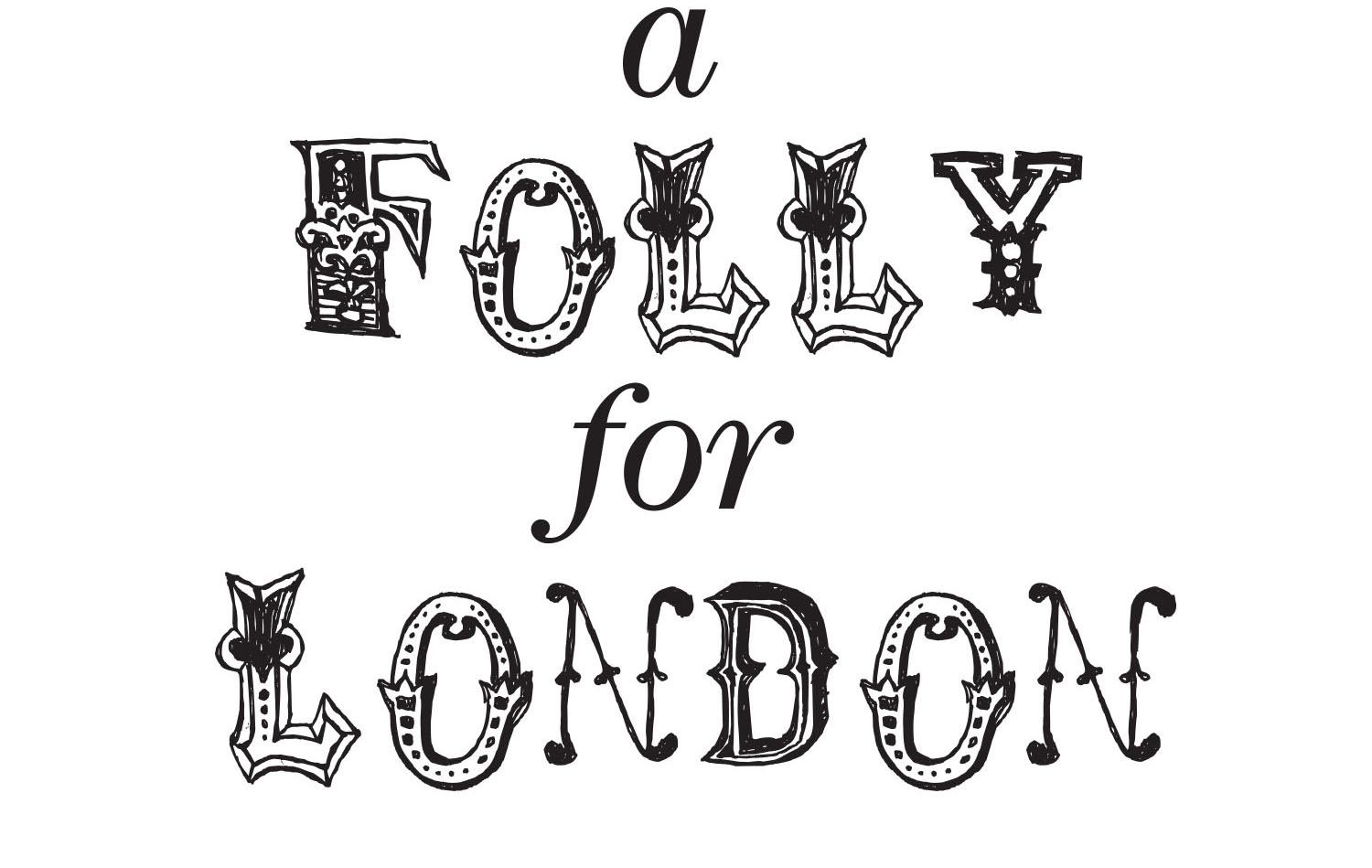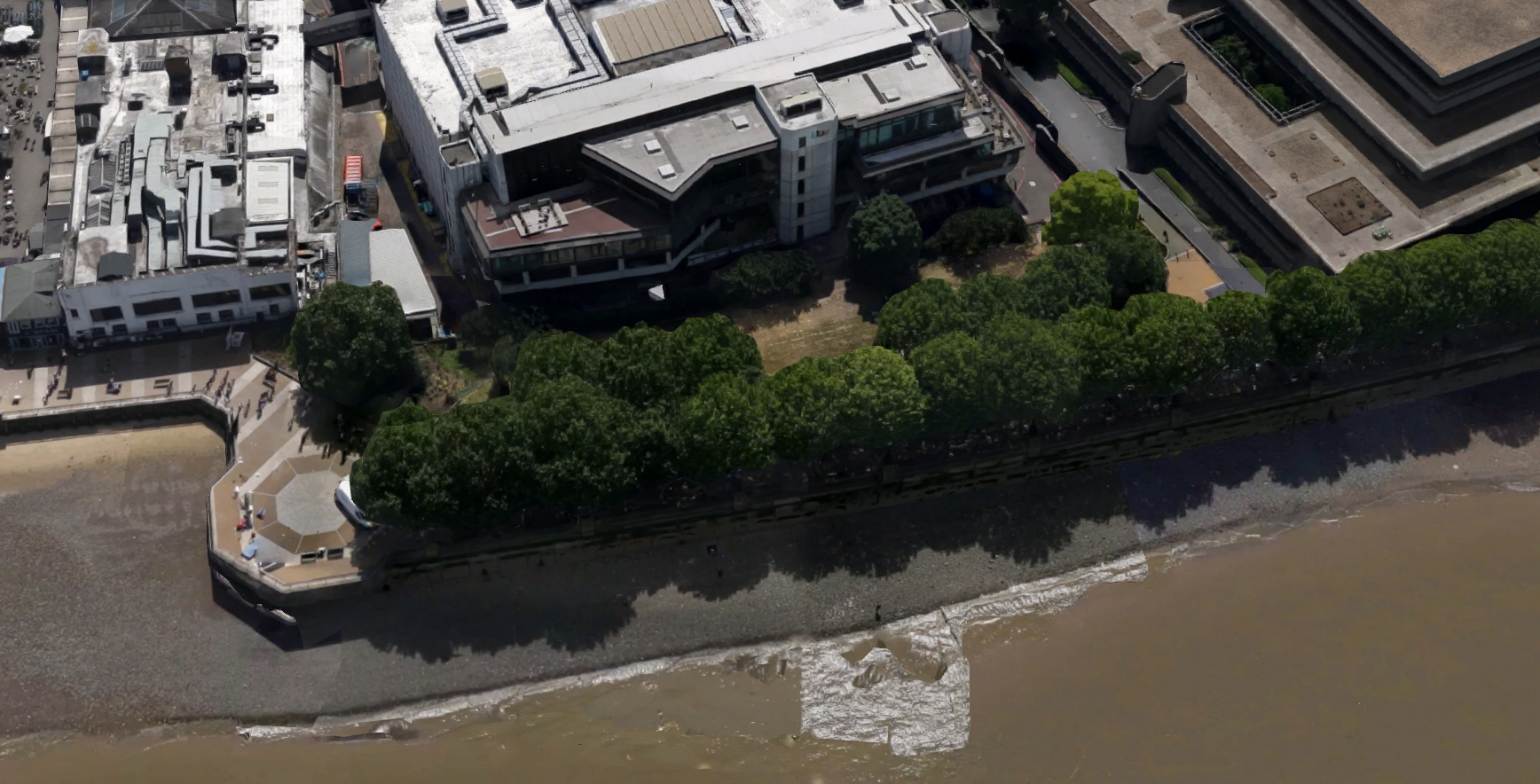A folly for London
The New MetropolitanArticle
2015

In the vein of Private Eye and Punch – or Hogarth and Banksy – read about Will Jennings’ Folly For London competition which is using satire as a tool for social action. Launching today, the competition runs through to August 28th when it will be followed by a physical and online exhibition of the shortlisted entries. A panel of judges including Owen Hatherley and Natalie Bennett will select an overall Winner and a Greenwash Winner.
Think of what you want from your ideal city. Perhaps there is a sense of aesthetic balance and harmony.
But there is more to art than just offering relief, and it is projects like all of these which offer a new way of looking which hopefully go some way to fighting back against the loss of space, character and idea in the city. DIG’s project, in particular, not only presents the visual conversations in the streetscape but also offers a platform for discussion and fight, which is vital.

Now, reverse all those ideals, and imagine a new city that stands in place of your first one, a halcyon reflected in a cracked mirror. I offer you a small parcel of land on which you can build a monument to this dystopia, a folly which serves no purpose but stands for everything.
 A Folly For London site, perspective (© Google Maps)
A Folly For London site, perspective (© Google Maps)
The idea of the proposed Garden Bridge over the Thames had been rattling around my head, and the more it rattled the more it seemed totally absurd and the absolute opposite of what London needs. I thought of how it blocked historic views of world heritage sites, including the cherished one from Waterloo Bridge. Of the greenwash spin of a concrete hulk wrapped in Glencore-donated cladding which will never repay its carbon footprint no matter how many hedges and trees are planted on top of it. Of the sacrificing of public greenspace for private commerce, queueing and corporate entertainment. Of the fact Transport for London are paying £30m for a bridge which can’t be cycled over and is right next to two perfectly accessible bridges when the whole of the Thames east of Tower Bridge is in desperate need of a crossing. Of the fact up to £150m of public money is being spent at the behest of a Chancellor and Mayor who are overseeing cuts and austerity.
 The widely disseminated image from a drone next to one from the planning application (which The Garden Bridge Trust don’t share so frequently) ©Heatherwick Studi & Arup
The widely disseminated image from a drone next to one from the planning application (which The Garden Bridge Trust don’t share so frequently) ©Heatherwick Studi & ArupThe Garden Bridge development has been allowed to get as far as it has because the people behind it and the political system through which it has passed have shown very little interest in informing the public (whether local, across London or more distant – because all are affected) of the true costs and effects of it being built. So, we only seen the bridge rendered from the vantage of an imaginary drone looking down and not from one of the many other images included in the planning documents from ground level showing the impact upon existing vistas towards Somerset House and St. Pauls.
We read about a new iconic landmark for London, but aren’t informed about the Garden Bridge Trust’s own reports which repeatedly use the word “adverse” with regards to views of existing landmarks. Quotes that state the bridge will be a tranquil place to dwell and dream are repeated by a lazy media who duplicate the Trust’s press-releases without looking deeper into documents which talk of a 600sqm “Disney queues” system. Proponents gleefully talk of the bridge only being closed between midnight and 6am as any London park, but forget to mention the small-print “it is acknowledged, however, that the opening hours may change in the future.”
The Garden Bridge is not only bad in itself, but is symbolic of all that is wrong in our political and urban realm. A shift from public to private, lack of democratic engagement to prevent an engaged and questioning public and the facade of ‘greenness’ being used to disguise something murkier.
The Garden Bridge Trust repeatedly claim to be committed to consultation, but barely anyone in London, let alone further afield, really knows the precise location, cost, effects and greenwash of the project. A Folly For London has been set up with this in mind, with the website acting as the tool of public engagement the Garden Bridge Trust seem to have been so keen to avoid. True public consultation on a publicly funded project should be informative about all the negative facts as well as positive ones, otherwise it is just the half-truths of marketing spin. They should be providing us with all the information of what is proposed, not just selected nuggets in order to sell to us an idea which we are to pay for. So the website is a platform for writing and comment from various voices about not just the Bridge but the numerous issues underlying it. The site for your folly designs (© Will Jennings)
The site for your folly designs (© Will Jennings)
It also offers an open-to-all and free-to-enter competition for an architecture of the absurd. I invite anybody to submit their own design for a Folly For London to be located on the land sacrificed to the proposed Garden Bridge, and through doing this attention is drawn to the lost public space and to the proximity to existing public bridges.
A competition needs a brief, and this one is subversive, requiring people to have a pretence of environmental interest whilst in reality being damaging, of blocking historic views, to squeeze an increasing tourist crowd into a smaller space and, as it’s London and houses are too cheap, increasing property values.
Through thinking about their idea of a hellish city and a monument to it, the competition acts as a catalyst for considering what is loved about London and what is worth fighting for.
It is also intended to be fun. All political engagement and activism is strengthened through plurality of approaches and having many fronts of battle. Thames Central Open Spaces (TCOS) have been campaigning brilliantly against the Garden Bridge since 2014, and their energy, solidarity and targeted legal action has been relentless, well humoured and has communicated the facts of the Garden Bridge to public, press and politicians in a way that The Garden Bridge Trust never attempted to. A Folly For London opens up a new front of attack against the bridge and the processes by which is come as far as it has. In a culture rich in satire, from Private Eye and Punch to Hogarth and Banksy, the artistic engagement and dry humour can add another level of communication and protest – through laughing at the proposed Follies we are also mocking the absurdity of the Garden Bridge. We don’t allow it a platform of rationality but instead dismiss it as the joke Lambeth and Westminster authorities should have done at the planning stage.